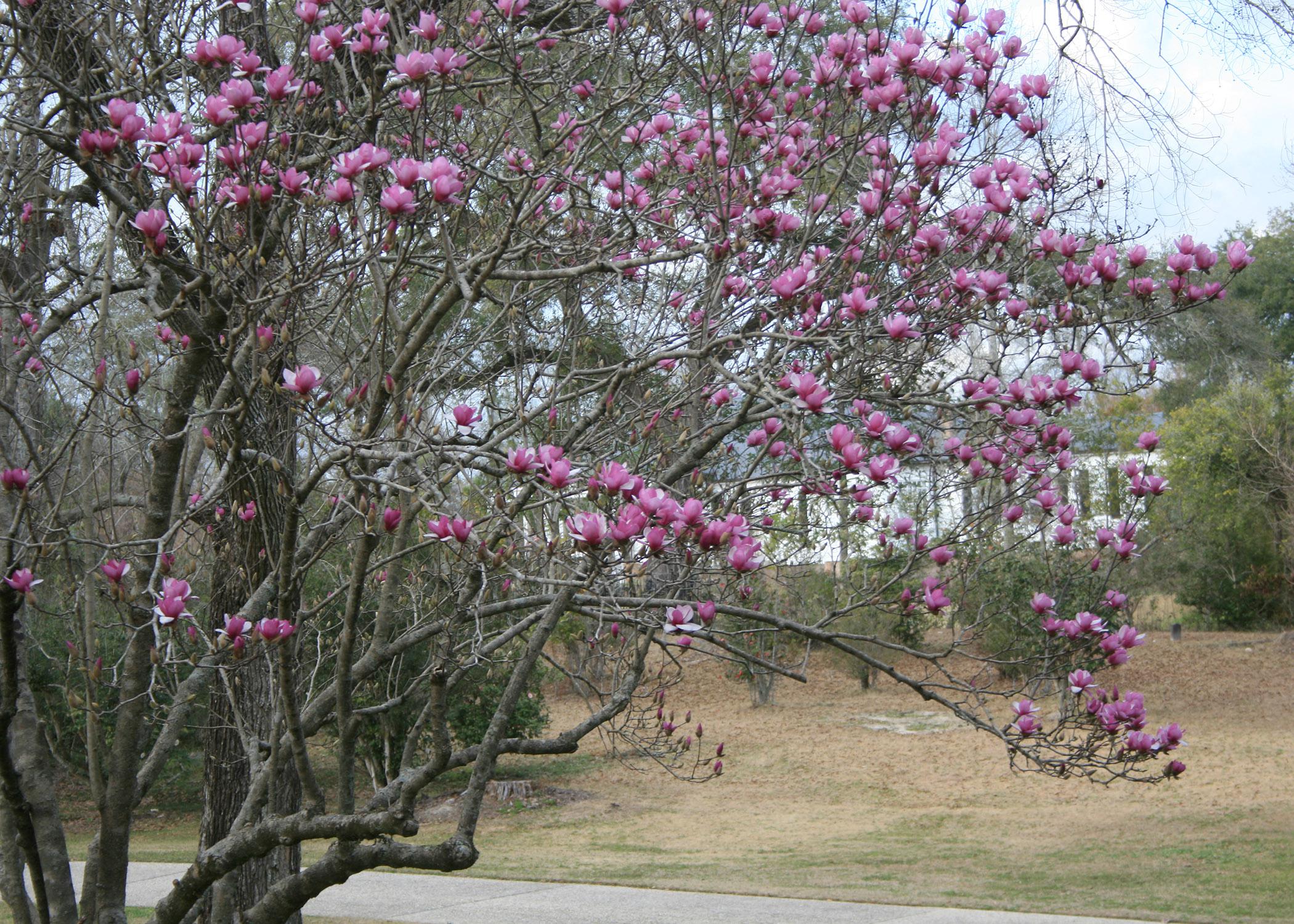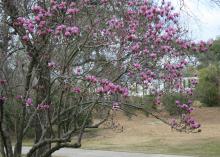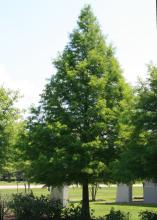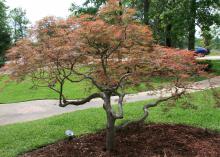Information Possibly Outdated
The information presented on this page was originally released on February 4, 2013. It may not be outdated, but please search our site for more current information. If you plan to quote or reference this information in a publication, please check with the Extension specialist or author before proceeding.
Bald cypress, Japanese maple, magnolias excel in landscapes
Even though fall is the ideal time, it’s still not too late to plant nice trees into our Mississippi gardens and landscapes. Of course I can’t list every tree in this column, but I want to draw your attention to a few I’m sure you won’t be disappointed to have in your yard.
The first is the bald cypress. You may think it has to be planted in soggy locations, but this tree is very adaptable. Some of the best specimens I have seen were being grown in very high and dry locations such as islands in parking lots and planting wells in sidewalks.
Bald cypress foliage is feathery and light green. In the fall, it turns a golden to rusty brown before falling off in the winter. Yes, bald cypress is deciduous.
The tree has a characteristic conical form. Be careful where you plant your bald cypress. It will eventually become a large tree, so don’t plant where its size will become a problem.
Japanese maple is another sure winner for your landscape. Currently, there are literally hundreds of Japanese maple selections available, the result of hundreds of years of selection development in their native Japan.
While there is a Japanese maple for nearly every landscape use, I really like the laceleaf, or dissected form, for the landscape. Dissected types have deeply divided leaves that can look like lace with intricate patterns. Generally, these are more shrub-like and low growing.
Japanese maples’ fall colors range from flaming orange to blood red and harvest gold. Dry weather in late summer can stress Japanese maples and enhance their fall color. It is best to plant them in the fall to allow their roots to get established and be ready for new growth in the spring. Mulch after planting to save moisture and insulate the roots.
Feed Japanese maples with a fertilizer for acid-loving plants on Memorial Day and Labor Day. Japanese maples prefer well-drained, moist, slightly acidic soils with morning sun and afternoon shade. Provide supplemental water during the summer and wind protection to keep the trees looking their best. Leaves exposed to hot, windy conditions can get scorched edges.
The last tree I want you to consider today is the magnolia. Some magnolias that surprise people are the deciduous varieties that bloom in the spring with beautiful flowers and fragrance.
Star magnolia is one of the earliest spring bloomers. It is a small, shrub-like tree with primarily white flowers that are tinged with pink. The narrow-looking petals are actually called tepals, and flowers can be up to 4 inches in diameter. These flowers frequently start opening after a few warm spring days only to be damaged by frost. Even with the frost risk, it is worthwhile to have this small tree in the landscape.
Saucer magnolia is by far the most popular of the flowering magnolias. It flowers in the middle of spring after the risk of late frosts has passed. The flowers are huge, spanning up to 10 inches. The colors vary from white to pink to bold purple, depending on the variety. There are many selections and cultivars to choose from, making it difficult to decide which saucer magnolia to purchase.
Other good tree selections include crape myrtle, trident maple and of course, live oak. These trees will make great statements wherever they are planted.










